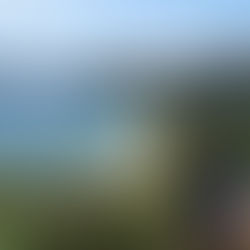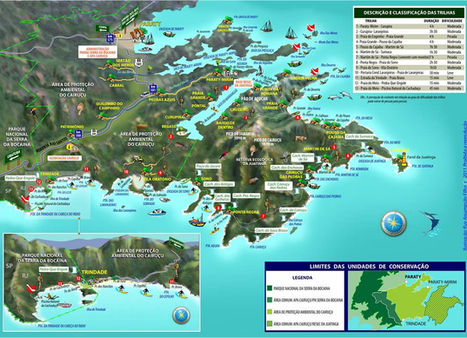- Rodrigo Pereira
- Jun 2, 2021
- 8 min read
Updated: Oct 20, 2023
The Paraty Water Trails
From the time I first moved to the Costa Verde region I heard talk of people and their canoes who used to paddle incredible distances, often in rough conditions, to bring their crops and dried fish to market.
Once there they bought products that were difficult to find in the remote coastal villages at that time; things like salt, kerosene and soap – always using these water trails.

Ilha Grande
First of all I lived in the village of Abraão on Ilha Grande (Big Island) and, living on an island, one of the things you need to learn is to paddle.
For me it was as natural as riding a bike.
I paddled a kayak; used the dinghy to go back and forth from the schooner; I paddled to fish; or when the boat broke down. I towed tourists on Sit On Top kayaks – if you’ve done this you know what I’m talking about (haha); paddled outrigger canoes and paddled just for the sake of it. For me these were my water trails.
Whether you had nothing to do or not, it was always the same – go paddling!
In the same way, after I moved to Paraty it was business as usual – nothing changed.
Paraty
First of all I lived in Paraty Mirim, on the coast on the way to the Bay of Mamangua.
There were walking trails to the beaches but there were also kayaks, canoes, dinghies and sailboats. Obviously, on most days, the best option was by sea and there I was again: this time on Paraty water trails.
When I moved to the town of Paraty itself I continued doing what I’d absorbed through the pores: paddling – working with kayaks and paddling. It was at this time that I met my friend and business partner Michael Smyth who started guiding (and towing!) clients around the Bay of Paraty as well.
In those days the company we worked for had easy access to the Pereque Acu river where we embarked and disembarked on what became another water trail.
Eventually we started leaving the kayaks on Jabaquara beach, after plenty more times towing clients, and from that point on, Jabaquara became our kayaking base.
We rented sit-on-top kayaks and Stand Up Paddle (SUP) boards until we finally discovered the world of sea kayaking.
From the first time I sat in a sea kayak I was certain I would never paddle a sit-on-top kayak again.
It was about this time that I first heard from a friend of mine that people used to paddle from Ponta Negra fishing village, on the Juatinga Eco-Reserve, to Paraty.
More Paraty Water Trails? Straightaway I became interested!
Research
From the beginning I was fascinated by the tales of adventure, adversity and immense knowledge of the natural world that was required to paddle such a long distance in rough seas in a canoe that seemed so small and fragile.
Also, how did they manage to carry loads of dozens if not hundreds of kilos, on top of the weight of the paddlers?
Not so easy…
And then I realised just how tough life must have been. Working the land, planting, harvesting and producing the manioc flour and then having to get to the local market by canoe. Quite a feat!
Ponta Negra village to Paraty was a four day round trip paddling a heavy canoe.
It’s also worth noting that before 1970 there was no asphalted road to Paraty. The products came and left by ferry coming from the towns of Mangaratiba and Sepetiba.
But here we are again – another Paraty water trail!
The Paraty Indians
Continuing my research I started reading about the indigenous people who used to live in the region of Paraty.
According to his book, which many regard as fantasy, and others as an accurate description of pre colonisation Brazil, the German adventurer Hans Staden – was already talking about the prowess of the local paddlers in about 1549.
Other adventurers drawn to the region in search of riches also spoke of the same canoes.
Canoes manned by dozens of natives, paddling so quickly that if there was no wind the sailboats were unable to escape. They completely dominated the forest and the sea.
These people were extremely skilled in the construction and navigation of the canoes. Very often the canoe is made from a single tree trunk.
But not just from any old tree trunk, it had to be the right type of wood. And this also set me thinking: how did they get the tree out of the forest and transport it so the beach or river’s edge to make the canoe? How much trial and error was required to achieve this level of perfection?
The best trees for Canoes
These days we know some of the types of trees from our region are perfect for making canoes, for example:
Cedro, (Cedrela fissilis)
Timbuíba, (Balizia pedicellaris)
Ingá amarelo, (Tachigali denudata)
Jequitibá, (Cariniana legalis),
Ingá flecha, (Inga sessilis),
Guapuruvu, (Schizolobium parahyba)
Figueira branca, (Ficus insipida).
According to a study by Márcia Regina Teixeira da Encarnação:
“The Sambaqui people of this region would have led lives fully adapted to the geographical characteristics of the coastal mountain range, the coast itself and the lagoons. Their canoes must have criss-crossed the waters of the lagoons and the region’s rivers, to all four corners, scouring the region. The Sambaqui people established a civilisation of canoeists living primarily from shellfish and fish.”
A brief digression
I was also fortunate enough to work as crew on the largest canoe I’ve been on, Tocorimé Pomatojari.
Built in the Amazon and then sailed down to Paraty, the Tocorime also decided to make Paraty her safe haven.
It was a great apprenticeship in oceanic sailing: trips between Rio de Janeiro, Ilha Grande and Paraty with groups of visiting foreigners.
I got to know lots of sailors and captains, including a Czech who built his own boat with friends and sailed around the world, but when he got to Paraty, of course, he fell in love.
In love with the city and with his partner. And has never left Paraty since. Ah! That’s love for you.
But this is another story that I’ll save for another day. Mika, your time will come!
And these days, whenever we paddle we see scenes that remind us of everything I am describing here:
Nets being thrown from canoes and hauled back in; the lives of thousands of people who continue to live from the sea, be it transportation or sustenance and the need to maintain their traditions, culture and protect their ancestral territories.
The local Caiçara people belong to the sea and the sea belongs to them.
Coming full circle back to the start of the text, if you’ve got something to do or not, it doesn’t matter, go paddle!
The Paraty Water Trails route
At long last, with 16 years experience and plenty of stories to tell, let’s talk a little about each stage that can be paddled – distances, places to spend the night and where to eat.
Along the way, whoever decides to paddle will gain an understanding of the richness of Paraty culture and that the true UNESCO heritage is the people that live here.
Before we get to the paddling itself, here are a few reminders:
Respect local culture;
Including the pace of life;
Support the local economy;
Remove garbage from the sea whenever you can and always take your own with you;
No wild camping;
Respect the rules of the Environmentally protected area.
Crossing the region on Paraty Water Trails
1º) Tarituba – Ilha do Araújo – 18 Km

Launch from Tarituba village. Easy road access for unloading and setting up equipment.
Keep a lookout! A lot of dolphins pass through this route.
There is a great mix of paradisiacal islands and beaches on this leg. Worth stopping at
Pelado Island – with restaurant
Cedro Island – bar restaurant opens but not daily
Ventura Island
On arrival at Araujo Island we recommend staying at local people’s houses and trying the local caiçara cooking
Éder 999587395
2º) Ilha do Araújo x Praia Vermelha – Média de 18 km

Islands in the Bay of Paraty.
On this leg it’s down to you how much you want to explore the bay or just head direct to Vermelha Beach. You can even go as far as Paraty itself.
On arrival at Vermelha beach we recommend Happy Hammock Eco-guest house and campsite for food and accommodation.
Paraty Explorer also has a 2 day paddle trip that goes to Vermelha Beach setting out from Paraty. More info here Costa Verde Kayaking Trip
We have a tour on this stretch: Kayak tour to Mangrove, Beaches and Islands
3º) Praia Vermelha x Saco do Mamanguá – Media 20 km

Paraty Bay Islands
On this leg, in addition to the islands, we recommend you explore:
Fundao Bay
Cotia Island
Paraty Mirim – restaurants on the beach
Arriving in Mamangua we recommend you paddle keeping to the right side. After Dadico’s restaurant there is a small community of local houses where you can stay.
Berti and his wife are excellent hosts. Berti also has a small boatshed where you can store equipment.
After dinner you should check out the bioluminescence down at the beach
Sr. Berti 024 999995349
4º) Mamanguá x Pouso da Cajaíba – Média 20 km

This leg is more exposed to less sheltered conditions. Mainly wind. It’s important to check weather and sea conditions and talk with local fisherman for a local forecast based on their experience.
For a bigger paddling day we recommend exploring Mamangua Bay – the Sugarloaf peak and the mangrove are highlights.
Praia Grande da Cajaiba has a beach restaurant and a waterfall to visit by trail.
There are a number of accommodation options in the Pouso da Cajaiba fishing village.
We recommend Zorro 24 998444441
Or Ananias 24 999862060
5º) Pouso da Cajaíba x Ponta Negra – Média 25 km

This leg involves some serious paddling and you need to be certain that you have the necessary paddling skills and fitness levels. As always it’s important to check weather and sea conditions and talk with local fisherman for a local forecast based on their experience.
This is an extremely exposed part of the open water coastline passing by the Juatinga point, known for its strong currents and big swell. Due to the rocky coastline there are almost no exit points on the way so bear in mind that it may be necessary to paddle all the way to Ponta Negra village without stops.
Highlights, in addition to the coastline and nature, include:
Marins de Sa beach – be very careful here as this is a Surf Beach with potentially big waves. Knowledge and practice of Surf landings required if you want to stop here.
On arrival in Ponta Negra we recommend staying in local people’s houses. Teteco is an excellent host, with cabin and a beach restaurant that serves excellent food.
Teteco 024 99991 8382
6º) Ponta Negra x Trindade – Média 18 km

Openwater beaches.
After leaving Ponta Negra there’s a chance to stop at some of the most beautiful beaches of Paraty.
Antigos and Atiguinhos beaches
Sono beach – good option for lunch as there are many beach kiosks
Praia Brava de Trindade
Where to stay - https://paratytrindade.com.br/
Safety
Take a Sea Kayaking course (ACA and BCU offer excellent courses worldwide)
Always paddle as early as possible in the day
Follow the weather and wind forecasts. Stay clear of the southwesterlies!
Check the tide tables. The tide can be your friend!
Do not risk using unsuitable or inadequate equipment
Routes beyond the Juatinga point have limited exit points in case of bad weather or for any other reason
Leave a step by step paddle plan with friends or family or contact sea kayaking professionals in Paraty. They can give support and rent equipment if required.
Get surf zone training and experience
The Paraty Water Trails routes proposed are for illustrative purposes only.
These Paraty Water Trails serve as a basis only and can be broken down into parts or stopover points can be changed.
Where to eat
You can’t beat local expertise and knowledge. Clean, cozy accommodation and meals that are made with freshly caught seafood, often caught by your hosts. Make the most of it! This is the tastiest part of paddling Paraty Water Trails.
For more info on guided multiday kayak trips check out our Tropical Fjord Kayak Trip
Written by:
Rodrigo Pereira de Almeida
Tour guide and founding partner of Paraty Explorer




















